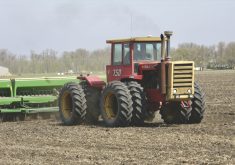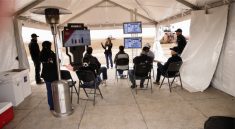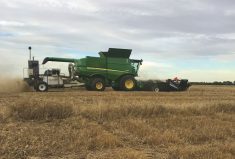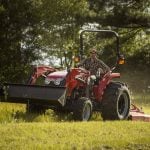As a kid, I can vividly remember one particular occasion sitting on the steps in my grandparents’ old farmhouse in the late 1960s looking at an issue of Country Guide. One image from its pages still sticks in my memory. It was an advertisement showing Massey-Ferguson’s newest line of tractors.
Why did that mental image remain with me all these years? Well, I think it was because those beautifully designed machines represented what was the cutting edge of technology back then. In my mind — and in the minds of others — they, and other tractors like them, opened up a world of new possibilities.
Read Also
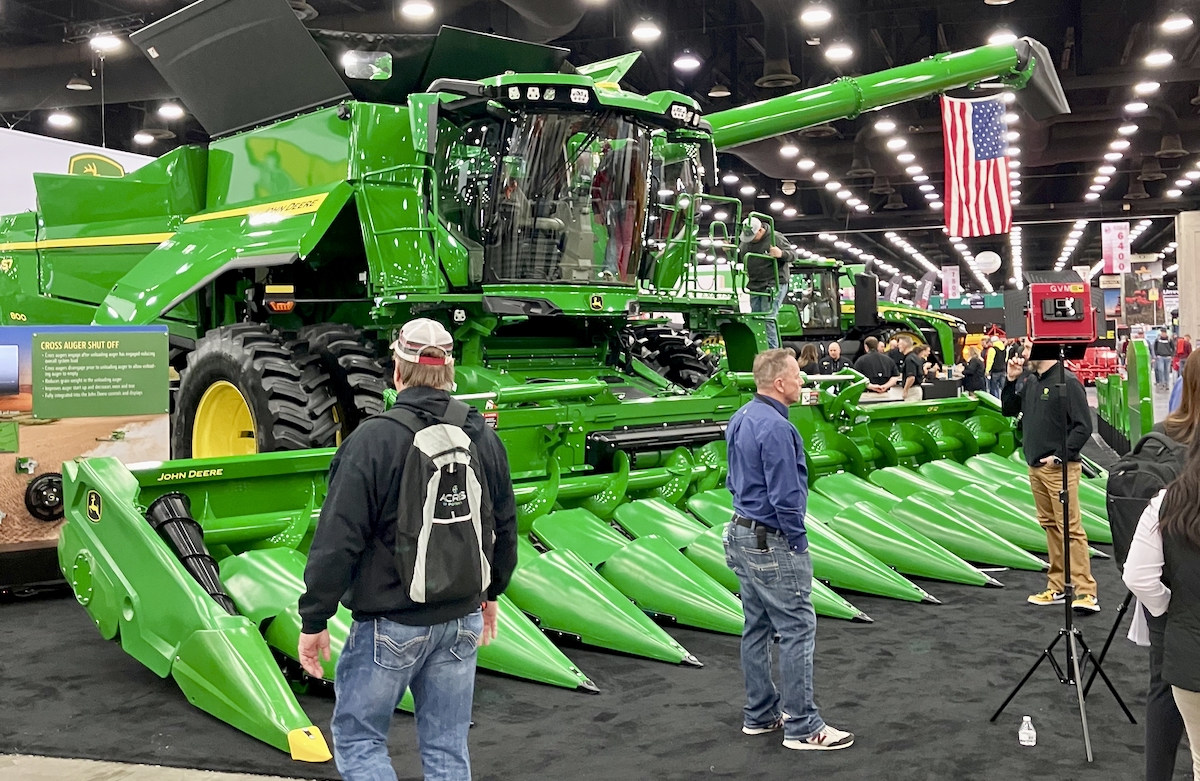
The pros and cons of new technologies
New farm technology hitting the marketplace can be awfully enticing, and it’s not been unheard of in years gone by…
Among all the technological advancements those tractors embodied, one of the best was their sheer size. They pushed commonly available horsepower to new highs. The steady growth in power being introduced by all the brands at that time increased farmers’ productivity and led to runaway growth in farm sizes.
Farmers who fit the “early adopter” definition back then quickly made use of that extra power and began to grow their operations. It turned out to be the start of what came to be known as the “horsepower race.”
Now, not only is that race over, but there are indications that tomorrow’s early adopters may actually head in the opposite direction.
“In the past decades, the historical trends in agricultural machinery were clear: bigger, faster, and wider,” said an editorial on agricultural trends in CEMA’s November newsletter. (CEMA is the association that represents agricultural machinery manufacturers in Europe.) “Average horsepower in tractors sold in Europe has continuously increased during the past years (i.e. just as it has here). But this trend is predicted to slow down in the next years and may even reverse in the future.”
One of the reasons for that, according to many industry watchers, is that big equipment often doesn’t mesh all that well with today’s focus on precision farming.
Now, Britain’s Harper Adams University and Precision Decisions, a private U.K. precision farming services firm, have launched the “Hands Free Hectare” demonstration project, which could be the model of agricultural production that will soon sweep the industry.
There is nothing big about the equipment involved in it. And that, organizers say, is the point.
The team will farm a one-hectare field entirely with small, autonomous machines through the 2017 growing season. The little robots will do all the work necessary to seed, maintain and harvest the grain crop.

“Automation is the future of farming,” says Kit Franklin, the Harper Adams project manager. “We’re currently at a stage where farm machinery has got to unsustainable sizes… we are seeing a number of issues, including reduced soil health through compaction which hinders plant growth, as well as reduced application and measuring resolution critical for precision farming.”
“Agriculture is suffering quite badly with soil compaction,” agrees Clive Blacker, founder of Precision Decisions. “But equally, we’re getting worse at precision agriculture in some cases as well. When you compare precision agriculture from a dairy perspective and an arable perspective, we’re miles apart.”
The dairy industry is actually leading precision agriculture in terms of achievability, attention to detail, and robotics, Blacker says. “With dairy, you’re treating every animal as an individual. Compare that to the arable sector, where combines are getting wider and wider, but the yield mapping technology is still the same. So we get less yield data.”
It all means that today’s crop farmers are actually getting more distant with their data collection, instead of getting higher resolution, Blacker says. “So I think we need an about-turn in the arable sector to start looking at things in higher detail, the level robots could potentially offer and deliver, the way we did it tens of years ago with our own eyes… looking at things at a plant level, as the dairy sector inspires us to do.”
For grain growers, reversing the machinery size trend to gain precision means losing the economies of scale and the productivity gains that have pushed equipment to its current size.
Autonomy, however, makes the use of small-scale machines practical, letting farms run many small machines simultaneously rather than one or two big ones.
“At the minute we’re doing it with small machines,” says Blacker, of the Hands Free project. “But it could be done with larger machines if we so wished. But one of the big opportunities I see is the small scale.”
And don’t be fooled by the one-hectare field size of the demonstration project. What works in this field can work for commercial producers; they’ll just need more machines.
“We’re using a compact tractor,” says Franklin. “That’s a 38-horsepower tractor. In terms of the implements, we’ll be sourcing them from the grounds-care market. We might be adding a bit more smarts to it, adding section control to the sprayer for example, and upgrading it with higher-tech equipment.”
The researchers won’t have to spend countless hours in labs writing new software code and creating new systems to get machines capable of working on their own, although there will be a need to spend some time doing that. It’s mostly pulling together the mass of open-source (i.e. free) software code widely available on the Internet and using common hardware designed for automated control of anything from miniature airplanes in a hobby store to high-horsepower farm tractors.
“In terms of the technical equipment, the automation brain is based on drone code and drone autopilot,” Franklin explains. “That’s where the work we do really comes in, with the integration. We’re taking an off-the-shelf microprocessor with the drone code on it, and we’re taking an off-the-shelf tractor and integrating the two to make them work together.”
The smaller equipment has other advantages for the project as well.
“One of them is the safety aspect,” Franklin adds. “If it all goes AWOL, it will find a hedge or a ditch and it will stop or we can catch it in a hedge, those sorts of things. Intrinsically, the smaller the machine, the safer it is.”
But getting grain growers to think small may still require some convincing.
“If we can get that across to farmers, that these are the benefits of using small machines, and we can get across to legislators that these machines are going to be good for the world,” Franklin says, “then there’s no reason we couldn’t see them happening commercially within the next five years.”
But that may depend to a large extent on a groundswell of demand from producers who will need to be not only early adopters but industry drivers, pushing manufacturers for field-ready robots.
“I think the major manufacturers have essentially sat on their hands for the last five or 10 years,” says Franklin. “I personally believe that if enough money and effort had been put into it 10 years ago, it could have happened then. So I think we’ve really got to drive it from the bottom up and say: this is the thing we want and there are advantages to it. Then, I think, they’ll catch up. I think we need to show them people want this.”
Really, it seems, that isn’t asking a lot from manufacturers. The technology already exists.
“As a team, we believe there is now no technological barrier to automated field agriculture,” Franklin says. “All the building blocks are there. The issue is when these robots are made in a research environment, they work when you do a demo, but they can be quite glitchy. What we need to do is get it to a point where the day we need to go spraying, the machine will always work. It’s getting that reliability nailed down.”
“We don’t have all the answers by a long shot, and we won’t get all the answers from this project,”adds Blacker. “But it’s giving us the opportunity to at least learn and prove the concept. And hopefully it will motivate a lot of people to start thinking this way.”
The whole point of this project is showing that technologically there is no reason this can’t be done, and by this time next year we hope to have done it, says Franklin. It’s not that expensive. The technology and the costs are not really the issue. It more comes down to legislation, public perception and farmers’ acceptance.
“This year it’s one hectare,” Franklin says. “The hope is we can do it again next year and maybe grow it using a larger area. That’s the aim we have, to drive it forward.”
“That’s a large part of my project, I think, just to shout and say, ‘This can be done. Why aren’t you doing it?’”
Following Hands Free Hectare
Harper Adams University and Precision Decision, the two partners running the Hands Free Hectare project, want to share their experiences growing a crop using only autonomous machinery. They are regularly posting updates on their Facebook page and on Twitter under the name @FreeHectare.




